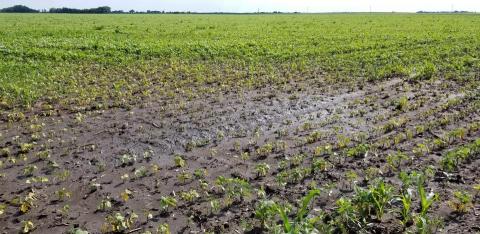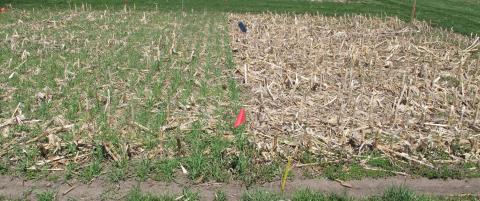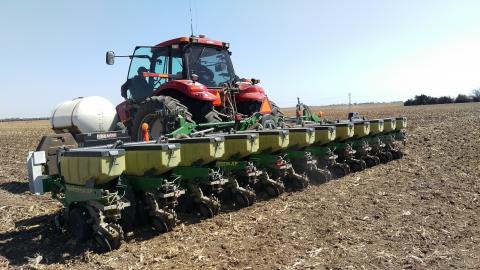Response of Germinating and Early Season Soybeans to Flooding
May 30, 2019
Injury to germinating and seedling soybean from flooding depends on several factors, including soybean growth stage, flood duration, and air and soil temperature and varies the varieties. Pythium and Phytophthora are two diseases to scout for after flooding.
Interseeding Cover Crops into Corn or Soybean
May 23, 2019
In some years it may be difficult to well establish a cover crop after corn harvest. This article surveys current research on interseeding into an established crop, further considerations, and how to test this practice on your farm.
Frozen, Emerged Corn?
May 10, 2019
Temperatures in some fields early Friday morning may have caused some to remember 2017 conditions and wonder about possible frost damage to corn seedlings. Here's how this year is different.

Soybean Germination/Emergence with April Planting Dates Relative to Coincident Air and Soil Temperatures in April and May
May 16, 2019
A closer look at air and soil temperatures in April and soybean germination and emergence from 10 planting dates did not find chilling injury, despite periods below 50°F. Further research is needed to better understand the imbibitional period in soybean.
With Delayed Corn Planting, Is It Time To Switch Maturities?
May 9, 2019
Research suggests that staying with a full-season hybrid until late May often provides the best yield. If planting is delayed to late May or early June, consider a medium-season CRM might be considered.
Replanting Corn: Things To Do and Think About
May 15, 2020
With the recent frost events that occurred the weekend of May 9-10, 2020 in portions of the State, some are questioning the need to replant corn. It’s important to assess potential recovery before making replant decisions.
Considerations when Planting Soybean Early
April 25, 2019
If you're planning to get an early start on your soybean planting, be sure to check for recommended soil temperatures and the forecast for the coming 48 hours to ensure optimal conditions for achieving good emergence.
Corn and Soybean Planting Considerations
April 24, 2019
Planting sets the stage for a successful crop with an even emergence and stand. Consider these tips to help ensure you're providing favorable planting condition via proper soil conditions, planting window, planting depth, and seeding rates.






